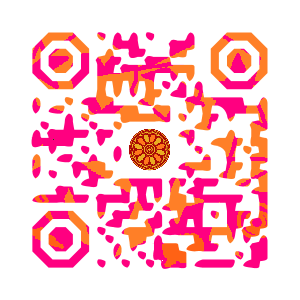- V4(4)Oct2015
- V4(3)Jul2015
- V4(2)Apr2015
- V4(1)Jan2015
- V3(4)Oct2014
- V3(3)Jul2014
- V3(2)Apr2014
- V3(1)Jan2014
- V2(4)Oct2013
- V2(3)Jul2013
- V2(2)Apr2013
- V2(1)Jan2013
- V1(4)Oct2012
- V1(3)Jul2012
- V1(2)Apr2012
- V1(1)Jan2012
:: Vol.4(2) (April 2015)

:: American Transactions on Engineering & Applied Sciences
http://TuEngr.com/ATEAS

ISSN 2229-1652
eISSN 2229-1660
FEATURE PEER-REVIEWED ARTICLES
- Problems of Heat, Mass and Momentum Transfer in Manufacturing Processes: A Brief Review
- Expert System for Slope Stabilization on Bangkok Clay
- The Effect of Orientation on Indoor Air Temperature in Hot and Dry Climate in Hadhramout, Yemen
- Creating a Resilient Sustainable Livable City
- The Sunlight Shading Performance in Traditional Style Apartment, Case Study of Putrajaya, Malaysia
 Jorge L. Velez Fournier, Jay K. Banerjee * , Alejandro Aponte (Mechanical Engineering Department, University of Puerto Rico at Mayaguez, Mayaguez, PR 00681-9045, USA )
Jorge L. Velez Fournier, Jay K. Banerjee * , Alejandro Aponte (Mechanical Engineering Department, University of Puerto Rico at Mayaguez, Mayaguez, PR 00681-9045, USA )(Back up)
Keywords: HERF; mass transportation; heat transfer.
AbstractIn machining processes the chip flows over the tool rake and carries heat away as it moves. This is a case of mass transportation with heat transfer. Similarly, during hot forging, upsetting or coining processes heat is transferred from the hot billet to the relatively cooler dies, punches or hammers with momentum transfer under high impact load. Also, in high energy rate fabrication (HERF) processes, such as electromagnetic forming, explosive forming, impact extrusion, etc. heat is generated almost instantaneously, in milliseconds, and its dissipation is a serious industrial problem due to the very short process cycle time. In the present paper some of the problems related to heat, mass and momentum transfer in the above mentioned manufacturing processes are reviewed and compared with experimental results.
 Boonchai Chearnkiatpradab *, and Warakorn Mairaing (Department of Civil Engineering Faculty of Engineering, Kasetsart University, THAILAND)
Boonchai Chearnkiatpradab *, and Warakorn Mairaing (Department of Civil Engineering Faculty of Engineering, Kasetsart University, THAILAND)(Back up)
Keywords: Agricultural soil; SHANSEP; SlopeEx; Soil series map.
AbstractSlopeEx is an expert system for slope stabilization on Bangkok Clay. The knowledge was created based on the 3 sources, the expert opinions, the past failure cases and the theoretical considerations. Such knowledge was integrated with fundamental engineering theories. The soil database for this system was developed the relationship between agricultural soil and engineering soil. From plotting the coordinates of specific soil bore holes on the GIS agricultural soil series map from Land Development Department of Thailand, LDD, 39 soil series were identified and classified into 4 main categories according to their engineering properties by SHANSEP theory. While the inference procedure is based on forward chaining. The C++ builder program was used as an expert shell. Users can input vicinity of slope failure then the program will identify 3 suitable methods and recommend the most effective stabilization method by weighted score. Furthermore the program will propose guideline engineering drawings, factor of safety and associated costs. The SlopeEx program was tested by using a scenario of slope failure on 3 different soil series areas: (1) embankment on soft soil on Chachoengsao series; (2) filled slope on Ayutthaya series; and (3) river bank on Petchaburi series. The program showed most suitable methods as (1) Cement column; (2) Benching slope and (3) Counterweight berm respectively.
 Mohammed Salem Bakhlah * and Ahmad Sanusi Hassan (School of Housing, Building and Planning, University Sains Malaysia, 11800 Penang, MALAYSIA)
Mohammed Salem Bakhlah * and Ahmad Sanusi Hassan (School of Housing, Building and Planning, University Sains Malaysia, 11800 Penang, MALAYSIA)(Back up)
Keywords: Mud-brick house; Green Technology; Thermal comfort; Building design.
AbstractThis work analyses the effect of various orientations on improving the indoor air temperature and indoor thermal comfort of mud-brick houses in hot and dry climate at Tarim city in Yemen. The problem is, in hot and dry climate due to massive solar radiation, the house orientation will cause a heat gain problem of solar radiation if it is not selected properly, and this problem having less attention by most local architects in building design to reduce indoor air temperature. No study has been conducted in mud-brick houses in hot and dry climate of Hadhramout to determine the effect of different orientation on indoor air temperature as well as to identify the proper orientation and the reduction may obtain in indoor air temperature by selecting proper orientation. First phase, field measurements of indoor air temperature (Ti) and outdoor air temperature (To) were carried out by using environmental data equipment. The survey was conducted in the summer session at the hottest period at every 3 hours interval in a day on July 2011. The second phase, Integrated Environmental Solution (IES-VE) simulation program was used for the analysis. The results obtained from the analysis show that the south orientation is the ideal orientation as the highest percentage of hours within thermal comfort were obtained. This study finds that orientation has weak significant effect in reducing the indoor air temperature as the difference between the orientations was not large, it is due to the small glazing area and small window to wall ratio.
 Reham M. M. Mohie El-Din (Department of Architectural Engineering and Building Technology, Faculty of Engineering, Modern Academy for Engineering and Technology, EGYPT)
Reham M. M. Mohie El-Din (Department of Architectural Engineering and Building Technology, Faculty of Engineering, Modern Academy for Engineering and Technology, EGYPT)(Back up)
Keywords: Livable City Principles City Planning Sustainability.
AbstractBy 2030, 5 billion people will live in cities, up from 3.6 billion in 2011. The challenge of accommodating the thousands that move to the cities daily and hence the cities constant growth, while providing reliable services is acute. As the pressure on space and demand for services increases, the concept of creating livable cities becomes more and more indispensable. Moreover, today livability is intertwined together with sustainability and resiliency in order to define the quality of life of current and future citizens in a better way. Thus, to have a more comprehensive approach for a successful livable city, it became crucial to also explore the sustainability & resiliency of urban systems in light of long-term, complex, dynamic processes.
 Yasser Arab *, and Ahmad Sanusi Hassan * (School of Housing Building and Planning, Universiti Sains Malaysia, Penang MALAYSIA)
Yasser Arab *, and Ahmad Sanusi Hassan * (School of Housing Building and Planning, Universiti Sains Malaysia, Penang MALAYSIA)(Back up) (mirror at Calameo)
Keywords: Façade; SunTool; House temperature; Sunshade.
AbstractThis study evaluates the performance of the sunlight shading design on front house’s facades which designed with traditional architectural style. The front facades of two case studies in Putrajaya, Malaysia are selected for the simulation; Putrajaya is the administrative city for the federal government, and it is considered the latest new city in Malaysia which characterizes postmodern design which exhibits a range of complex geometric elements blending with colonial, modern and traditional architectural style. The selected case studies are two high apartment’s buildings consists of sixteen stories and located in section (KE P16) and 17 stories located nearby artificial lace in present 18 (18R8). SunTool software is used in the survey to calculate the shading area on the façade. The survey will be conducted at a position when the sun path is perpendicular to the house façade, and then compare between the two designs and the used of architectural elements. The study finds that the recessed wall with balcony and sunshade elements that used in the traditional architectural style facade design are efficient to make the façade shading performance better which causes low temperature and provides cool atmosphere during the day time when the temperature is very high outside, and that is the one of the reasons behind the popularity of the Traditional architectural style.
Previous: Vol 4(1) January 2015 ......... Next: Vol 4(3) July 2015
Call-for-Papers
Call-for-Scientific Papers
Call-for-Research Papers: ATEAS invites you to submit high quality papers for full peer-review and possible publication in areas pertaining engineering, science, management and technology, especially interdisciplinary/cross-disciplinary/multidisciplinary subjects.
To publish your work in the next available issue, your manuscripts together with copyright transfer document signed by all authors can be submitted via email to Eic @ TuEngr.com (no space between). (please see all detail from Instructions for Authors)
Publication and peer-reviewed process:
After the peer-review process (4-10 weeks), articles will be on-line published in the available next issue. However, the American Transactions on Engineering, & Applied Sciences cannot guarantee the exact publication time as the process may take longer time, subject to peer-review approval and adjustment of the submitted articles.
:: 2015 Rights Reserved
:: American Transactions on Engineering and Applied Sciences